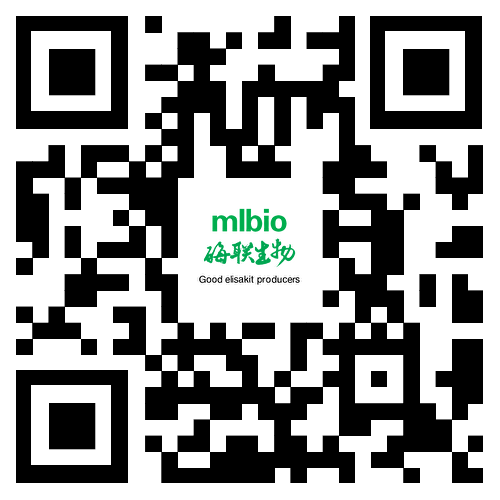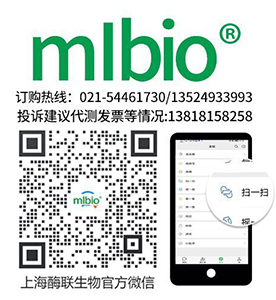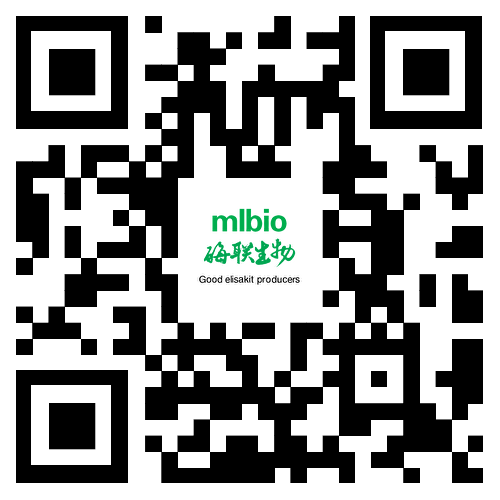產品貨號 : mlR1961
英文名稱 : ABI1/SSH3BP1
中文名稱 : ABI1/SSH3BP1蛋白抗體
別 名 : Abelson interactor 1; Abelson interactor 1; ABI 1; ABI1; ABI-1 Abl binding protein 4; Abl interactor 1; Abl interactor protein 1 long; AblBP4; Ablphilin 1; E3B1; Eps8 binding protein; Eps8 SH3 domain binding protein; Hssh3bp1; NAP1; NAP1BP; Spectrin SH3 domain binding protein 1; SSH3BP; SSH3BP1; ABI1_HUMAN.
研究領域 : 免疫學 信號轉導 轉錄調節因子
抗體來源 : Rabbit
克隆類型 : Polyclonal
交叉反應 : Human, Mouse, Rat, Chicken, Dog, Horse, Rabbit,
產品應用 : WB=1:500-2000 ELISA=1:500-1000 IHC-P=1:400-800 IHC-F=1:400-800 IF=1:100-500 (石蠟切片需做抗原修復)
not yet tested in other applications.
optimal dilutions/concentrations should be determined by the end user.
分 子 量 : 55kDa
細胞定位 : 細胞核 細胞漿 細胞膜
性 狀 : Lyophilized or Liquid
濃 度 : 1mg/ml
免 疫 原 : KLH conjugated synthetic peptide derived from human ABI1:101-200/508
亞 型 : IgG
純化方法 : affinity purified by Protein A
儲 存 液 : 0.01M TBS(pH7.4) with 1% BSA, 0.03% Proclin300 and 50% Glycerol.
保存條件 : Store at -20 °C for one year. Avoid repeated freeze/thaw cycles. The lyophilized antibody is stable at room temperature for at least one month and for greater than a year when kept at -20°C. When reconstituted in sterile pH 7.4 0.01M PBS or diluent of antibody the antibody is stable for at least two weeks at 2-4 °C.
PubMed : PubMed
產品介紹 : May act in negative regulation of cell growth and transformation by interacting with nonreceptor tyrosine kinases ABL1 and/or ABL2. In vitro, at least isoform 2 and isoform 4 suppress the transforming activity of Abelson murine leukemia virus(v-Abl) after overexpression in fibroblasts. May play a role in regulation EGF-induced Erk pathway activation. Involved in cytoskeletal reorganization and EGFR signaling. Together with EPS8 participates in transduction of signals from Ras to Rac. In vitro, a trimeric complex of ABI1, EPS8 and SOS1 exhibits Rac specific guanine nucleotide exchange factor (GEF) activity and ABI1 seems to act as an adapter in the complex. Regulates ABL1/c-Abl-mediated phosphorylation of MENA (By similarity). Recruits WASF1 to lamellipodia and there seems to regulate WASF1 protein level.
Function:
May act in negative regulation of cell growth and transformation by interacting with nonreceptor tyrosine kinases ABL1 and/or ABL2. In vitro, at least isoform 2 and isoform 4 suppress the transforming activity of Abelson murine leukemia virus(v-Abl) after overexpression in fibroblasts. May play a role in regulation EGF-induced Erk pathway activation. Involved in cytoskeletal reorganization and EGFR signaling. Together with EPS8 participates in transduction of signals from Ras to Rac. In vitro, a trimeric complex of ABI1, EPS8 and SOS1 exhibits Rac specific guanine nucleotide exchange factor (GEF) activity and ABI1 seems to act as an adapter in the complex. Regulates ABL1/c-Abl-mediated phosphorylation of MENA (By similarity). Recruits WASF1 to lamellipodia and there seems to regulate WASF1 protein level.
Subunit:
Interacts with ABL1, ENAH, STX1A, SNAP25, VAMP2, EPS8, and through its N-terminus with WASF1. Part of a complex consisting of ABI1, STX1A and SNAP25. Part of a complex consisting of ABI1, EPS8 and SOS1. Interacts with SOS1, SOS2, GRB2, SPTA1 and the first SH3 domain of NCK1. Isoform 6 does not interact with NCK1. Component of the WAVE2 complex composed of ABI1, CYFIP1/SRA1, NCKAP1/NAP1 and WASF2/WAVE2.
Subcellular Location:
Cytoplasm. Nucleus. Cell projection, lamellipodium. Cell projection, filopodium. Cell projection, growth cone. Cell junction, synapse, synaptosome. Cytoplasm, cytoskeleton. Note=Localized to protruding lamellipodia and filopodia tips. Also localized to neuronal growth cones and synaptosomes.
Tissue Specificity:
Widely expressed, with highest expression in brain.
Post-translational modifications:
In vitro substrate for v-Abl. Phosphorylated on tyrosine residues after serum stimulation or induction by v-Abl.
Similarity:
Belongs to the ABI family. Contains 1 SH3 domain. Contains 1 t-SNARE coiled-coil homology domain.
SWISS:
Q8IZP0
Gene ID:
10006
Important Note:
This product as supplied is intended for research use only, not for use in human, therapeutic or diagnostic applications.











